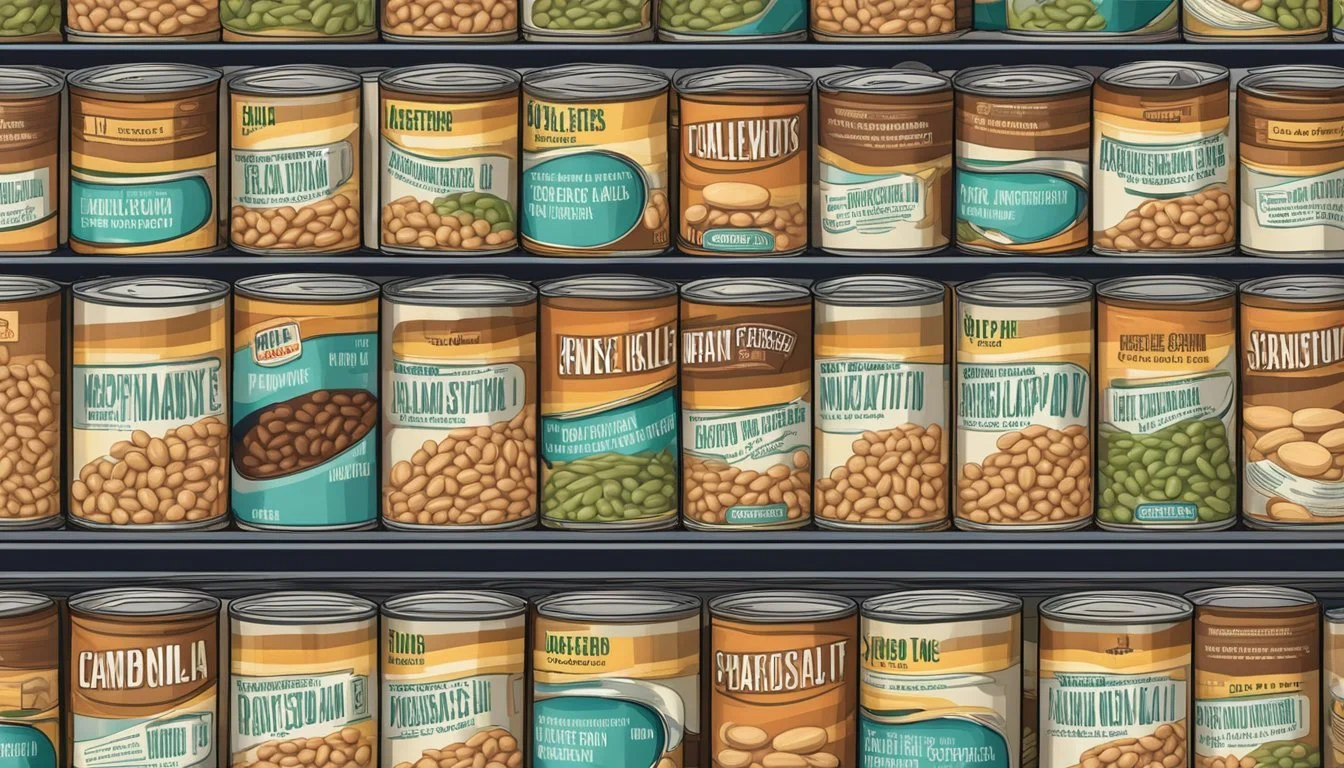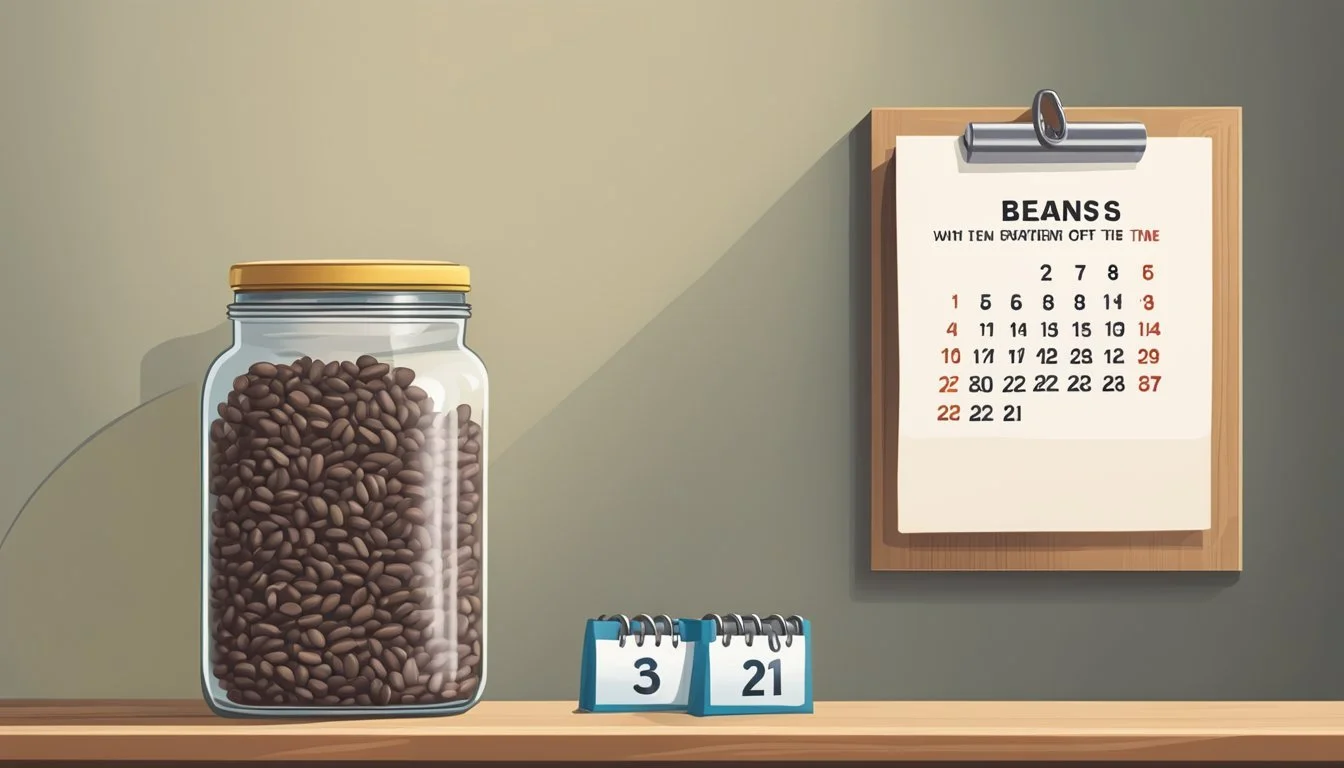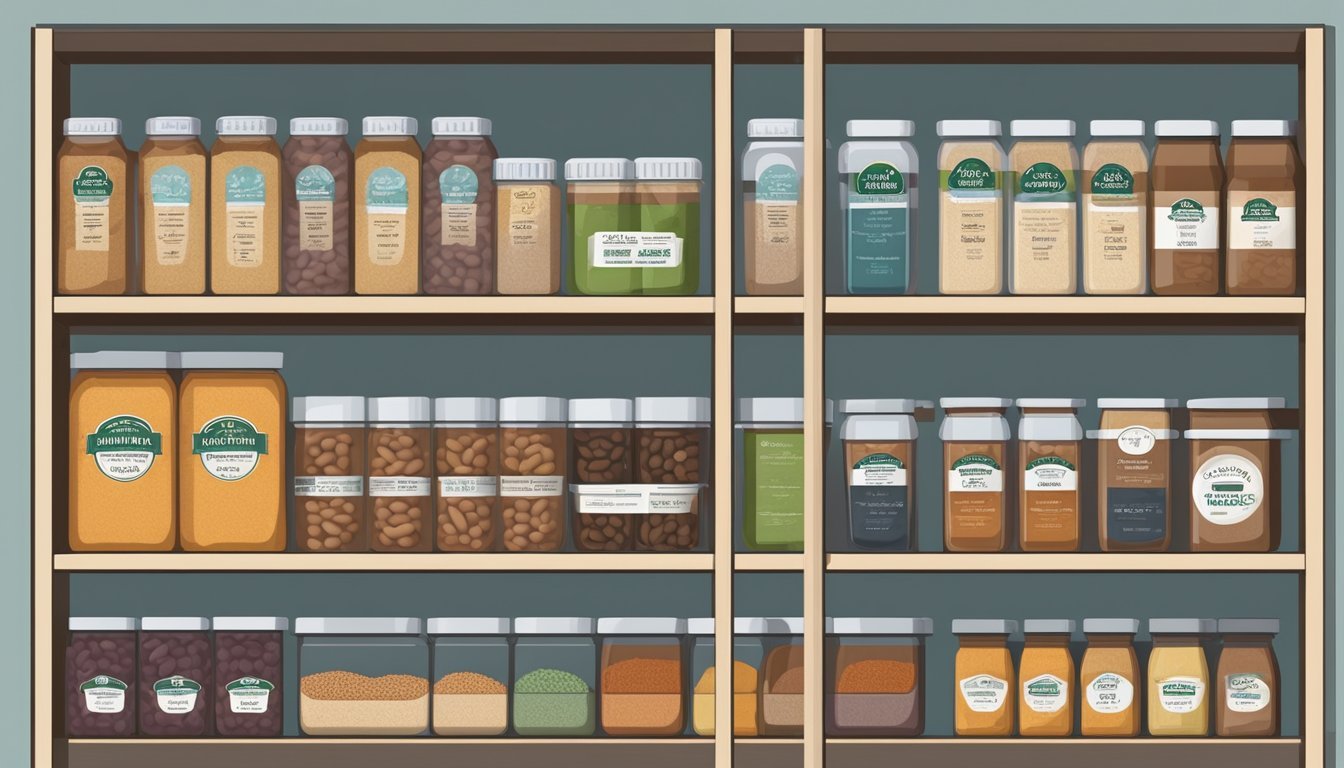How Long Do Beans Last?
Shelf Life and Storage Tips
Beans, a staple in diets around the world, are known not only for their nutritional benefits but also for their impressive shelf life. As legumes, they offer a rich source of protein and fiber, making them an excellent addition to various meals. When it comes to storage, beans prove to be a versatile food item that can be kept in various forms – dried, canned, or cooked.
Dried beans have an exceptional shelf life if stored properly in a cool, dry place. They can retain their quality for a minimum of one year, but under the right conditions, they can remain edible for decades. This makes them an ideal choice for long-term storage, offering a reliable food supply that maintains its taste and nutritional value over time. It is important to use air-tight containers to prevent moisture and pests from compromising the beans' quality.
When beans are cooked, their longevity diminishes, but they still offer a considerable shelf life when stored correctly. In the fridge, cooked beans (how long do cooked beans last?) can last up to a week; in the freezer, they can last about a month. It's beneficial to note the date when they are stored, which can help manage their consumption while maintaining their freshness. Canned beans, on the other hand, last for several years, thanks to the hermetic sealing process that preserves them. All these storage methods ensure beans remain a reliable and accessible food source that can be enjoyed throughout the year.
Types of Beans
When it comes to beans, shelf life varies significantly depending on their state—whether they're dried, canned, cooked, or fresh. Here's a concise guide on how long different types of beans last.
Dried Beans
Dried beans, which include varieties like kidney beans (how long do kidney beans last?), chickpeas, and lentils (how long do lentils last?), have a remarkable shelf life. When stored properly in a cool, dry place such as a pantry, they maintain quality for at least 1-2 years. However, it's not uncommon for dried beans to remain consumable well beyond that if the conditions are ideal, with some lasting indefinitely without losing their nutritional value.
Shelf Life in Pantry
Kidney beans: 1-2 years
Chickpeas: 1-2 years
Lentils: 1-2 years
Canned Beans
Canned beans are convenient and have a long shelf life due to the preservation process. Generally, they're safe to consume until the expiration date on the can, which is often several years from the production date. After opening, however, they should be stored in the refrigerator and consumed within a few days.
Shelf Life in Pantry
Prior to opening: Until expiration date
After opening: Refrigerate and use within 3-4 days
Cooked Beans
Once cooked, beans must be refrigerated or frozen for safe keeping. In the fridge, cooked beans, including all the varieties like kidney, lentils, and chickpeas, typically last up to one week. They can be frozen for long-term storage, extending their usability for approximately 6 months.
Shelf Life
In the refrigerator: Up to 1 week
In the freezer: Up to 6 months
Fresh Beans
Fresh beans, such as green beans, have a considerably shorter shelf life of beans. They need to be refrigerated and are best consumed within a week of purchase. Fresh beans maintain their quality when kept in a fridge, but they don't have the same longevity as dried or canned beans.
Shelf Life in Fridge
Up to 1 week
Storing Beans
Proper storage of beans is essential for maintaining their quality and longevity. Beans, whether dry, cooked, or canned, require different storage methods to ensure they remain safe to eat and retain their nutritional value over time.
Pantry Storage
Dry beans are best kept in a cool, dry place such as a pantry. They should be stored in airtight containers to protect them from moisture and pests. When stored correctly, dry beans can last for years but are best used within 1-2 years for optimal quality. The lack of oxygen in the packaging can extend their shelf life significantly.
Refrigeration
Cooked beans and canned beans after opening should be refrigerated in airtight containers to prevent contamination and spoilage. They should be consumed within 3-5 days for the best quality and safety. The cool environment of the fridge slows down the growth of bacteria, ensuring that beans remain safe to eat.
Freezing
For long-term storage of cooked beans, freezing is an excellent option. Cooked beans should be cooled to room temperature, then placed in an airtight container or freezer bag before being frozen. They can last up to 6 months in the freezer. Freezing cooked beans properly helps retain their texture and flavor.
Factors Affecting Shelf Life
The longevity of beans in storage is governed by several conditions that can either maintain their quality or lead to spoilage. Knowing how to manage these factors ensures beans remain safe and nutritious for consumption over extended periods.
Moisture and Mold
Beans need to be stored in a cool, dry place to prevent moisture build-up. Elevated humidity levels can catalyze mold growth which not only deteriorates the quality but also renders the beans inedible. Signs of spoilage such as mustiness or visible mold signify that the beans have been compromised by moisture.
Temperature and Light
Exposure to heat and light can adversely affect the shelf life of beans. Storing them in a location away from direct sunlight and at stable, cooler temperatures ensures optimal preservation of their quality. A pantry or a cupboard away from sources of heat, like stoves or heating vents, is an ideal storage place.
Air Exposure
Beans are best kept in air-tight containers to minimize oxygen exposure. Oxygen can cause beans to become stale and lose their flavor. Implementing oxygen absorbers in storage containers can further extend their shelf life by removing residual air that may contribute to degradation.
Pests and Contaminants
A clean storage environment free from pests such as weevils is crucial. Pests can infest beans quickly and cause spoilage. Using sealed containers not only minimizes air exposure but also serves as a barrier to pests and contaminants that may otherwise be drawn to dry food storage areas.
Health and Nutritional Considerations
Beans are a nutritional powerhouse, providing essential protein, fiber, and minerals. Maintaining their quality and nutritional value is crucial for health benefits, while proper storage can prevent health risks associated with spoiled beans.
Nutritional Value Preservation
The nutrient profile of beans, rich in protein and fiber, can deteriorate over time. Proper storage plays a pivotal role in preserving the nutritional value of beans. For dried beans, this means keeping them in a cool, dry place to extend their shelf life up to approximately 2-3 years before they begin to lose nutrients. Peak mineral and vitamin content is best maintained within this timeframe, as most naturally found vitamins may degrade within 5 years.
Risks of Spoiled Beans
When beans go beyond their expiration date or are stored improperly, they can become rancid or develop a sour smell, posing potential health risks. Spoiled beans may harbor bacteria, which can lead to foodborne illnesses. The safety of beans is paramount; hence, one should always inspect for off-odors or changes in appearance. Consumption of rancid beans should be avoided to ensure health risk prevention.
Cooking and Usage
When it comes to incorporating beans into a diet, they offer versatility and nutritional value, particularly as plant-based proteins suitable for vegetarian and vegan recipes. They require proper preparation to ensure both safety and palatability.
Preparing Beans
Before cooking, dried beans typically need to be soaked, which can reduce cooking time and improve texture. There are two main methods:
Standard Soak: Beans are soaked in water for about 8 hours or overnight.
Quick Soak: Beans are brought to a boil for a few minutes, then left to stand for an hour off the stove.
After soaking, rinsing the beans is a crucial step. They should then be cooked until tender, which varies in time depending on the bean type. Cooked beans can be refrigerated for around 3-4 days.
Bean-Based Recipes
Beans are a staple in numerous dishes, appreciated for their adaptability in recipes.
Soups and Chili: Beans are a hearty addition providing thickness and protein.
Dips: Blended beans form the base for various dips and spreads.
Burgers: Mashed beans serve as an excellent binding agent for making vegetarian burgers.
Pasta: Beans can be incorporated into pasta dishes for added texture and nutrition.
In all recipes, beans contribute significantly as a plant-based protein, making them ideal for those following a vegetarian or vegan lifestyle. Their mild flavor makes them a canvas for a wide range of seasonings and culinary styles.
Bean Storage Techniques
Effective bean storage is key to maintaining their freshness and extending their shelf life. Various techniques can be employed depending on the available storage materials and the intended duration of storage.
Short-Term Storage: For daily use, beans can be kept in plastic bags or mason jars in a cool, dry place such as a pantry. This method is accessible and convenient for beans that will be consumed within weeks.
Air-Tight Containers: To avoid moisture and pests, beans should be stored in air-tight containers. This includes specially designed kitchen storage containers with secure seals. For those looking to minimize plastic use, glass containers with rubber gasket seals work effectively in keeping beans dry and safe from insects.
Storage Method Pros Cons Mason Jars Reusable, visible contents Fragile, may not be fully air-tight Plastic Bags Flexible, space-saving Not robust, vulnerable to punctures Air-Tight Containers Pest-proof, moisture control Can be bulky, varies in quality
Long-Term Storage: When storing beans for several months to a year or more, one should consider using food-grade 5-gallon buckets with gamma lids to secure the contents against air and light. For added protection, including oxygen absorbers is advisable, as they significantly reduce the risk of spoilage and extend shelf life.
Cool, Dry Environment: Regardless of the container choice, beans should be kept in a cool, dry place away from direct sunlight. Basements or root cellars often provide the ideal environment for long-term storage of beans.
By implementing these storage techniques, individuals can confidently maintain the quality and longevity of their beans, ensuring they have a nutritional and versatile ingredient ready for use in their culinary creations.






